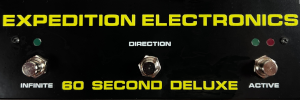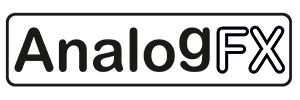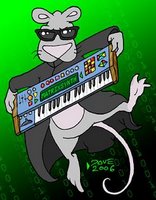Showing posts sorted by date for query Adventures in sound. Sort by relevance Show all posts
Showing posts sorted by date for query Adventures in sound. Sort by relevance Show all posts
Sunday, December 07, 2025
Further adventures in DIY Buchla 100 with La 67 Counterparts
video upload by Tom Churchill
"A couple of years ago, I made a video about the La 67 Mort’s Barge, which is a replica of a set of five Buchla 100 series modules from the 1960s. Now I’ve expanded it with five more DIY modules that La 67 recently made available again: the 144 dual square wave generator, the 111 dual ring modulator, the 106 six-channel mixer, the 156 control voltage processor, and the 191 sharp cutoff filter. In this video, I do a quick tour of the new modules, then I run through a few patches to let you hear how they sound in context.
Note: this video is not sponsored; La 67 has no involvement."
Chapters:
00:00 Patch previews
01:41 Introduction
03:44 144 Dual Square Wave Generator
06:25 191 Sharp Cutoff Filter
09:17 106 Six Channel Mixer
09:42 111 Dual Ring Modulator
10:00 156 Control Voltage Processor
11:10 Resonant band-pass filtering
15:41 Square wave FM and resonant low-pass filtering
18:32 Square wave techno jam
20:32 Four-oscillator mega-drone
25:57 Sci-fi ring-mod sequences
29:44 Polymetric sequencing with external gear
34:00 Robotic ring-mod electro jam
Thursday, November 27, 2025
Creative Cross Modulating Eurorack Filters // Double Bubble by Thonk Synth
video upload by DivKid
"Here we have a new Eurorack DIY stereo filter from Thonk Synth. It's a stereo analogue multi mode filter made for creative modulation. Whether it's dual parallel channels, series filer routings, mono to stereo, stereo in and out or even mono filtering with a separate filter modulator (a filter modulator? What? - heads up, it's ace!). Check out the patches below."

"Double Bubble is a 16HP Eurorack dual analog multi‑mode filter designed for creative sound design and flexible signal processing. Each channel features an analog filter core that can operate in one of four modes – Low‑Pass, High‑Pass,
 Band‑Pass, or Notch. The input of Channel A is normalled to Channel B so its easy to create stereo filter patches from a mono sound source.
Band‑Pass, or Notch. The input of Channel A is normalled to Channel B so its easy to create stereo filter patches from a mono sound source.The two channels of Double Bubble can run as independent dual mono filters or be linked together for stereo operation. The filters can also be routed in serial configuration to create more complex signal paths such as a variable width bandpass or notch phasing effects. The SPACING control and wide range of CV inputs give deep modulation possibilities such as dynamic formant style filtering.
The FEEDBACK and XMOD (cross‑modulation) controls add further interaction between the two channels, ranging from subtle harmonic enhancement at low settings to more extreme, self‑modulating textures when increased. The dedicated V/OCT inputs for each channel allow the filters to function as FM oscillators or tone sources when pushed into self‑oscillation. This flexibility allows the Double Bubble to cover a wide range of roles, from precision cascading filter patches to dynamic stereo filtering and experimental feedback adventures!
Features:
Dual analog VCF with LP, HP, BP & Notch outputs
Resonance control per channel with switchable compensation
Mono, serial, parallel, stereo link routing options.
Cross modulation (XMod), FM and V/oct inputs per channel
Feedback with positive & negative phase
Frequency Offset Spacing with CV control
LED indicators for visual feedback on modulation and modes.
Designed in-house at Thonk"
Friday, October 03, 2025
Adventures in Audio - Technics SX K200
video uploads by Manitou Productions
Playlist:
1. Adventures in Audio - Technics SX-K200
Part one of three episodes covering the Technics SX-K200 from 1982. In this episode we examine its current state and hear some sounds before moving on to cleaning and evaluation. Let's go!2. Adventures in Audio - Technics SX-K200 - Repair
Chapters:
0:00 A little sketchy
0:09 Opening titles
0:17 Intro
1:53 Power on
2:43 It makes sound
3:01 Three dead keys & problem buttons
3:32 More sounds
4:32 A look at the cartridge
4:59 Chorus effect and solo synth sounds
8:18 To the workbench!
8:42 Cleaning time!
11:50 Disassembly time!
12:48 The innards
15:23 Forensic files
18:57 Outro
19:14 Pinot's Corner
We return to the vintage Technics SX-K200 keyboard as it undergoes minor repairs and servicing to restore functionality. Not much 'audio' this time around, but you'll see a good deal of the inner workings.3. Adventures in Audio - Technics SX K200 - Post Repair Test
Chapters:
0:00 These come off pretty easily
0:20 Titles
0:27 The innards, freshly cleaned
1:07 Restoring the non-working keys
4:54 Removing the key-bed for cleaning
6:04 Removing the control board
8:11 Cleaning the switches and faders
10:43 Repairing the start switch
11:56 Progress report
12:25 Removing residue from a circuit board
13:24 Replacing the control board
14:38 Testing button connectivity
15:14 Removing the dead speaker
16:43 Replacing the key-bed
17:12 Cleaning under the good speaker
17:53 Repairs complete
18:23 Outro
18:58 Pinot & Ivy's Corner
In the final part of our look at the Technics SX-K200 keyboard/synthesizer, we find out how successful the repairs were and check out the sounds and functions. Let's go!
Chapters:
0:00 That didn't work
0:08 Titles
0:15 Intro
0:55 Testing the keys
1:45 'One finger'
2:44 The sliders
2:55 Rhythms
4:22 Fill in & intro
5:04 The sounds
9:56 Organ tremolo
10:39 Celeste & chorus
12:01 The solo synth sounds
13:37 Green LEDs
13:55 Transpose
14:50 Technichord
15:59 Demo tunes
18:06 The memory pack
18:47 Outro
19:32 Pinot & Ivy's Corner
Wednesday, September 10, 2025
Elektron Officially Introduces Tonverk
video upload by Elektron
You might remember Tonverk mentioned in previous posts here.
"We are delighted to introduce Tonverk. A machine primed for adventure. An instrument to propel you towards extraordinary music-making and boundless sound exploration. It is packed with 16 varied tracks full of polyphony, multisampled instruments, auto sampling, never-ending routing possibilities, a mass of FX options to play with (including plenty of newcomers), deep modulation, an extended 256-step sequencer, and lots more fun features to get stuck into. All in one special box."
Check with dealers on the right for availability.
Friday, June 13, 2025
Adventures in Audio - Talking Typewriter
video upload by Manitou Productions
"Today we look at the Talking Typewriter by Petite, circa 1981. What does it do? How does it sound? And what's rattling around inside...? Let's find out!
Chapters:
0:00 What's rattling?
0:12 Titles
0:20 Leaking batteries
1:01 Cleaning the battery terminals
3:52 New batteries
4:55 Power on!
6:00 It speaks the letters
7:42 I try to spell some words
12:52 It speaks the numbers
14:19 Some revelations
15:33 I attempt to open it up
17:13 It keeps its secrets for today
18:29 Outro
18:52 Ivy's Corner"
Sunday, May 04, 2025
Intellijel MultiGrain |The Grainmakers Playlist | Episode 14
video upload by Cinematic Laboratory
"I did not expect this playlist to grow with yet another grainmaker. I am quite happy with the ones I already have and my Intellijel stealth case is already completely full. So when you already have plenty of options and no room, what better excuse is there to just get it? So here we are.
I can't just objectively use MultiGrain on its own, without considering the alternatives and Arbhar as a reference module. Is it even fair to compare it with what's already around? I think so. Objectively, MultiGrain covers a lot of ground. It's versatile and musical, but it can also do microsound adventures. However, I had to go back and forth between manual and module to find out how typical granular techniques are implemented. For instance, there's no spray, no panning, no dubbing, etc, etc. Well, it's there, but it's implemented in a completely different way. If you're familiar with granular synthesis, MultiGrain is simply not intuitive to use, even though the user interface is amazing. If you want a spray, you'll need to randomize start and length. If you want panning, you'll need to randomize level and tone. Need a threshold to start your recording? You'll need to go to the advanced sampling page which complements the main and ALT pages.
Still, MultiGrain is in my favorite top 3, but Arbhar and Morphagene are 1 and 2 respectively. I think Arbhar is more suited for musical adventures, and the Morph still wins when it comes down to splicing virtual tape and making weird sounds. MultiGrain provides a lot of both, but it will take time and patience to find what you're looking for.
I hope Intellijel will listen to their end users and work on firmware updates to streamline the experience. It would be great to splice a drum loop over the eight sounds using transient detection. It would be great if two or more sounds could play together, and it should be able to dub over a sound to make layers. MultiGrain has the potential to become the best granular module in eurorack, but not today. Not yet."
Wednesday, March 19, 2025
MultiMods | NUSS Episode 02 | One is enough, but why stop there?
video upload by Cinematic Laboratory
"The MultiMod is now officially my favorite module of 2025, but the year is still young and spring is in the air. Between you and me, I got a second one because of the audio processing. Yes I know it's a 1 to 8 CV processor but when you speed up an LFO, it becomes sound and when you spread it up, it becomes a cluster. I'll add chapter markers later because it's a long video.
I've been inspired by the works of Allen Strange and Curtis Roads, so you can expect some strange recipes and microsound adventures. It must be a coincidence but MakeNoise also covered gate delays. I'll use the 281t for mixed envelopes triggered by Pams, and the MM will make variations from it. It's great fun to send all kinds of CV to the Morphagene and it's even more fun to use two MM's, one for modulation, and one for sound 'surrealization'. I picked a new word so I will not give the false impression 'it can do audio rate'. It's more like experimental 'abuse' of the 24 bit AD/DA converter that just happens to respond extremely well with any sound source.
In the final scene I'll use a Lyra-8, which is a dream combo because the Lyra-8 is mono and it becomes a stereo Lyra-64 with MM."
Friday, May 17, 2024
New UDO Super 8 Press Release & Pics

You've seen the SUPERBOOTH videos.
The official press release follows:



The UDO Super 8
The Super 8 is a 16-voice polyphonic, bi-timbral analog-hybrid performance synthesizer. Employing superior hands-on controls, an expressive 61-note weighted keyboard with polyphonic aftertouch and all the powerful, flexible and addictive sound of the UDO Audio family.
Overview
Introducing the next evolution in the Super series. At the core of the Super 8 is two independent binaural analog-hybrid synthesizer signal chains using UDO’s proprietary and proven synthesizer technology. With up to 16 voices of polyphony and two unique timbres each with their own independent effect chain, this instrument is analog reimagined. Like its larger sibling the Super Gemini, voices and timbral layers can be split, dualled, sequenced all at the touch of a single control.
Powered by complex FPGA digital oscillators, the Super 8 is decorated with expansive tonal features such as wave morphing, cross & ring modulation, bi-directional sync and an all-analog signal path to the output, inspired by the analog poysynth heavyweights of lore. Equipped with a 61-note semi-weighted keybed with polyphonic aftertouch, left hand performance controls and 256 performance and patch slots, 32 interchangeable waveforms and 16 sequences, the Super 8 balances power, playability and performance.
Sitting in between the Super 6 and the Super Gemini in size and power, the Super 8 puts the player first using high quality tactile control elements with our user-centric intuitive design philosophy that inspires exploration and sonic play. Adopting a similar true-stereo Binaural signal path with dual FPGAs and twin effects processors like the Gemini, and yet retaining the portability and road-friendly personality of the Super 6. The Super 8 will be a long time friend and partner in your adventures in sound.
Super. Evolved.
As the next evolution in the Super family, the 16-voice Super 8 sits confidently between the Super 6 and the Super Gemini. This synth is the distillation of the UDO philosophy of the power of play — with the dual cores and playability features of it’s bigger cousin, all in a more compact and simplified presentation — it’s the best of both worlds.
Duality in Sound
The Super 8 allows you to effortlessly transition between two independent synth layers, inspiring textural, deep and rich soundscapes at a touch. With UDO’s championed powerful, flexible and immediate sound, this synthesizer is designed to take you on a sonic journey.
Respected Tradition
Meets Cutting-Edge Innovation
Using the tried and tested UDO framework of state-of-the-art FPGA digital architecture with archetypal voltage-controlled synthesizer technology, the Super 8 is a harmonious meeting of old and new in ideas and techniques. All contained within a no-expense-spared build with the highest quality components, The Super 8 is an instrument for life.
At a Glance
Price (RRP)
€ 3,749
£ 2,995
$ 3,699
Availability
First units shipping July 2024
top-line spec
– 16 voices (8 voice in binaural mode)
– Bi-timbral
– Analog-hybrid
– 61 note semi-weighted polyphonic aftertouch keybed
– High quality control elements
Size and weight
Instrument
1040mm × 400mm × 95mm
13.4kg
Packaged
1150mm × 550mm × 230mm
18.1kg
Wednesday, May 15, 2024
Eowave Introduces Supamix | 8 patches with the mixer who wasn't one | Eurorack
video upload by eowave
Supamix is a compact Eurorack mixer designed to fuel your sonic adventures. This versatile module as 6 channels and a unique mute automation engine into 10HP, making it perfect for live performances, space-conscious setups, and creative mixing.
Mix with Precision and Expression:
Dedicated Pan Controls: Craft your stereo image with 2 individual pan knobs for manual placement.
Dynamic Panning: 2 CV-controlled pan inputs let you add movement and dynamism to your sources.
Seamless Integration: Stereo inputs with dedicated gain allow effortless connection of stereo modules.
Dedicated Mute Buttons: Take instant control with individual mute buttons, featuring a freeze function for sustained muting when using the swap engine.
Automate Your Mutes with Creativity:
Supamix feature a unique swap engine made to control the mutes states manually or via cv to Build Evolving Patches.
12 modes of for controlling your mutes are available:
1A: Trigg Invert: Instantly flip mute states with a trigger.
1B: Gate Invert: momentary flip mute states with a gate.
2A: Turn Off: Momentarily silence all channels with a gate
2B: Wave On: Progressively unmute channels as a CV rises.
3A: Binary Counter: trigger to increment a 6-bit binary sequence, turning mutes on/off.
3B: CV to Binary: Transform a CV signal into a 6-bit binary pattern, precisely controlling the state of each mute based on the CV value.
4A: Trig Rotate: Shift mute positions with a trigger. each trig shift the mute position one step further.
4B: CV Rotate: Shift mute positions with CV control. at 0V the mute are in their original position, at 5v mute will be shifted 6 position forward.
5A: Trig Sequencer: Control a step sequencer who invert the mute state where the playhead is. each trig will move the playhead one step further
5B: CV Sequencer: Control a step sequencer who invert the mute state where the playhead is. at 0v, the playhead is on the first mute, at 5 V on the 6th
6A: Randomize: Shake things up with a trigger that scrambles all mute states.
6B: Random solo:each trig will turn off all the mute exept one selected randomly
Beyond the Modes:
Freeze & Override: if you long press one off the mute, it will be freezed on bypassing the swap function on this track
Module Expansion: Connect Supamix to the "O" line/phone output module for additional functionality (sold separately).
More Than Just Mixing:
Subtle Saturation: Crank the level pots for a hint of distortion to add bite to your sound.
Tuesday, April 23, 2024
Elektron Digitakt 2 Incoming
Update: new pics and details added below.
Update2: Official announcement with videos here.
This one is making the rounds. The big reveal may be coming tomorrow per the screenshot further below, sent my way via Soviet Space Child. .
Details:
"With Digitakt II, you can weave splinters of sound in stereo, ripped from the moment and brought to your fingertips for marvelous audio manipulation and beat arraying. Enjoy easy to use sample-crafting and spectacular sequencing. Preserve or distort reality as you so desire with 16 tracks ready for stereo or mono samples, or MIDI and all kinds of modular adaptability.
Key Features
• Digital drum computer & stereo sampler
• 16 audio tracks all ready for stereo or mono samples, or MIDI
• Swappable filters: 1 Base-width filter and then 1 from Multi-mode, Low pass 4, Comb, EQ, or Legacy LP/HP
• 3 assignable LFOs per track
• Delay, reverb, chorus, bit reduction, sample reduction, and overdrive per track
• Updated modular workflow
• Euclidean sequence generator
• 128-step Elektron sequencer
• Expanded memory and power
• 4 × Trig modes
• Song Mode create, edit & play full compositions with ease"
Thursday, March 07, 2024
Your Oscillators New Best Friend! // VCO's Little Helper (VLH) by Takaab (SIAM Modular)
video upload by DivKid
"Here we're checking out VCO's Little Helper (the VLH) by Takaab (who are SIAM Modular too). It's a small 2hp module that can work like an expander for any oscillator you want to use it with. There's two inputs giving you two octaves of sub oscillators (-1 and -2), ring modulation, a noise source and thru outputs to save multiples or stacking cables to keep patching with your inputs.
Here's what Takaab have to say 'VCO’s Little Helper is a eurorack module that supercharges your existing oscillators by adding a ring mod, sub and noise. The VLH was designed in collaboration with journalist and musician Steve O'Hear following a conversation asking how we could squeeze the features found in the VCO section of many vintage synthesizers into a eurorack system.'
VLH is also a affordable addition to a Eurorack system priced around £/€/$100 (it's 4040 Thai Baht). It's available direct here // https://www.siammodular.com/takaab-vl...
Here's the mini documentary on how the VLH came to life"
Takaab VLH : VCO's Little Helper: The making of ... euroack ring mod | sub oscillator | noise
video upload by Adventures in sound
VCO's Little Helper made its first apearance on the site back on JULY 27, 2021.
Friday, December 01, 2023
7 mins of Roland MKS80 Sounds - Uninterrupted! #SuperJupiter
video upload by Andy Whitmore
"MKS80 Super Jupiter - All the Sounds from Andy's Session Days!
During the 90s - Andy Whitmore was one the UK's top session keyboard players playing on over 50 hit records including
Boy George
Elton John
Cathy Dennis
Peter Andre
Brother Beyond
Lemar
Atomic Kitten
Danni Minogue
& many many more!
Here are the sounds he used from the Roland MKS80.
Don't forget to subscribe to our channel for more captivating musical adventures!
The audio is DIRECT, 100% DRY, & IN STEREO - You are hearing the raw audio as it comes directly from the synthesizer. NO post processing (Effects, EQ, or Dynamics) whatsoever.
Watch me bring that sound back to life!🎹🕺"
Wednesday, October 11, 2023
Cherry Audio PS-330 (No Talking)
video upload by Elektronick Musick
"Emulation of the colossal and ultra-rare semi-modular analog polyphonic synthesizer released by KORG in 1977"
See the announcement post here, and Resonation preset pack demo here.
"PS-3300 Features
Exactingly faithful virtual analog emulation of the semi-modular analog polyphonic synthesizer released by Korg in 1977
Three independent "signal generator" panels, each with an oscillator, lowpass filter, three-peak resonators, envelope with velocity, amp, two mod generator LFOs, and per-note tuning:
3X VCOs with six waveforms: triangle, saw, rectangle (square), two preset pulse waves (with different widths), and PWM (variable-width pulse)
3X resonant VCF 12 dB/oct lowpass filters with the option to select between the standard "clean" PS filter or the "crunchier" MS-style filter
3X modulatable "triple resonators": 12 dB/oct bandpass filters to produce vowel and phasing tones
3X discreet ADSR-type envelope modulators with velocity control, and amplitude modulation
3X two syncable "mod generators" (LFOs) with output jacks: one with triangle, saw, ramp, rectangle, pink noise, and white noise, and the other with triangle waveform
3X temperament section with individual tuning knobs for the 12 chromatic notes, and temperament presets for Equal Tempered, Mean Tone System, Hepatonal System, and Just Intonation
Copy/paste settings from one signal generator panel to another
Polyphonic mode with up to 24 voices of polyphony and three monophonic modes: last, low, and high note priority
Semi-modular synthesizer with virtual jack and cable system, featuring unlimited mults per jack and customizable (color, transparency, animation) cables
Master signal mixer panel with sample & hold, general envelope generator, and two control voltage (CV) processors
Individual channel panning
User-selectable bend range and master tune
Studio-quality integrated effects: chorus, echo with sync, and three types of reverb (spring, plate, and Galactic)
Over 360 professionally designed presets in a dozen categories. These include a bonus Legacy collection of basic presets based on the patch sheets in the original PS-3300 Owner's Manual, a 3100-based Glissando patch, and a 432 Hz Equal Temperament patch, all to get your started in your own sound design adventures.
Standalone virtual instrument and plug-in versions
Complete MIDI control and DAW automation for all controls, with easy-to-use MIDI Learn and mapping
Cherry Audio’s popular Focus zoom-in feature, as well as standard UI zoom and resize via drag
Complete documentation available directly online from the instrument or in downloadable PDF format
User-adjustable oversampling control
Also available: With its three-synths-in-one architecture, unique resonators, and semi-modular nature, the PS-3300 is truly a behemoth of synthesizers. Sound designer James Dyson's Resonation Preset Pack (sold separately) includes additional presets that go further into the relative dimensions between light and shadow and all the way to the outer limits."
Friday, September 01, 2023
UNEXPECTRAPHON | Advanced Patching and Sound Design with Maths and Erbe-Verb.
video upload by Cinematic Laboratory
"Spectraphon is a module with many faces and a big mustache. It can have a classic additive spectral processed sound, but it also offers sub oscillators and two basic sinewaves, one clean, and one a bit saturated. It's a big module with a big sonic spectrum (duh!). But an even bigger world unfolds when you patch it up with some old friends, in this case Maths and Erbe-Verb. It's a module that needs to be explored and discovered.
Like Strega, Telharmonic, Mysteron and Erbe-Verb I don't really like Spectraphon's raw raspy sound which can easily dominate a patch and makes it very recognizable. However, the many output options can suit your needs for more gentle sounds. You just need to know how, so hopefully my patch adventures can offer some new perspectives. Welcome to the Unexpectraphon!
Fun fact, this video includes Shared System Tutorials 44 with different captions, explaining half-rectification of a simple sine with Maths.
I always see the Shared as a reimagination of the classic Buchla 200 series with a twist so I always think of it as 'vintage' instead of 'advanced'. Sure, it's an expensive powerhouse flagship but if you ignore the black & gold panels, you may also see a collection of basic modular functionality like LFO, Envelope, Polarizer, dual VCO, VCA, tape echo, reverb, clock division, randomization, 16 step sequencing, human interaction and basic sampling/looping. It's a template for a complete modular setup, only missing a filter. Even if you don't own a Shared, my 44 episodes can still bring you plenty of inspiration for similar modules and functions. I would never say 'everyone should own a Shared', but it helps to look at what it does - and all the things you have to do yourself, like making white noise from scratch.
00:00 Introduction
00:10 Rectification with Maths
02:21 Charming snakes again
04:02 Odd and Even output normalization and sound
05:48 Unexpected bowed strings
06:48 Erbe-Verb reverb trail feedback patch
09:09 Explicit Noise"
Saturday, July 22, 2023
The Untold Story of the Formanta Faemi 1-M: A Soviet Synthesizer Legend
video upload by DB Studios
Clacky keys.
"Welcome to the enchanting world of vintage synthesizers! Join us on an extraordinary journey through time as we unveil the captivating history of the Formanta Faemi 1-M, a rare gem of Soviet engineering.
In this video, we delve into the rich tapestry of the Soviet Union's musical landscape during the 1980s, where cutting-edge electronic instruments were a marvel to behold. We take a deep dive into the history and sound of this synthesizer.
The Formanta Faemi 1-M, known for it's polyphonic prowess, emerges as the centerpiece of this captivating tale. Explore its unique features, from the three oscillators with diverse waveforms to the enchanting filter section with its myriad sound-shaping possibilities.
While navigating the challenges of creating musical instruments under a planned economy, the Formanta Faemi 1-M triumphs as a true testament to ingenuity and creativity. Unveil its raw, bold, and characterful sound, and understand why it has earned its place in the hearts of musicians and collectors worldwide.
Join us for insightful interviews with individuals who share their firsthand experiences with this iconic synth. Discover the allure of the Faemi 1-M through their stories and see how its scarcity has transformed it into a coveted collector's item.
So, if you're a music enthusiast, history buff, or just someone seeking unique sonic adventures, hit that play button and immerse yourself in the compelling world of the Formanta Faemi 1-M."
Sunday, April 30, 2023
Playing the Waldorf Q - Carlo Mezzanotte
video upload by carlomezz
"I have owned the Waldorf Q for a while, but only in recent times I have had the opportunity to really sink my teeth into its very powerful synthesis architecture.
The first batch of patches that I have programmed includes several well-known synth timbres, plus a few more adventurous sounds. I find this an excellent approach to familiarize with an instrument. I didn't try to directly imitate the warmth of analog vintage synths; the Q has a strong personality in itself, and a big, aggressive basic sound. All the mod routings allow for very complex timbres of a special kind, cold and precise, but also full and satisfying.
What you hear in this video is all single patches, no multis. Only the internal effects were used, with no external processing except a little bit of eq."
Playing the Waldorf Q - Carlo Mezzanotte (Part 2)
"Here's the second part of my Waldorf Q programming adventures, where I try my hands at more complex sounds, plus a short multitracked improvisation at the end. With FM, ring mod, wavetables, oscillator sync, four multi-stage envelopes, comb filters, and plenty of modulation options - there's a lot of ground to explore. In particular, I like to ride the fine line between tonal and non-tonal timbres, where the sidebands build up in a dynamic way, creating groups of partials which can grow until they 'almost' become noise, but always keeping the original root clear. (well - almost always. : - ) ) Very often, I have programmed aftertouch and the mod wheel to change important details of the harmonic spectrum.
For some reason, several of these sounds ended up with a strong ambient/hypnotic connotation... I guess it's just an inclination that I have. : - )
Again, what you hear in this video is all single patches, no multis. And again, only the internal effects were used, with no external processing except a little bit of eq.
At 15:52, I did a brief improvisation using some of these sounds, plus a couple from Part 1. I used 4 stereo tracks, without adding any external effects.
I had some fun with video editing, but I'm a total amateur at that.... the moral: better to focus on the sounds! : - )"
Friday, February 03, 2023
"Swimming In Copper" - (Eventide Misha Adventures)
video upload by Electronisounds Audio
"I got the urge to make something with a really dramatic, melodic lead line - so I paired up the Eventide Misha sequencer with the Modbap Modular Osiris oscillator, the Eventide H90 pedal, and The Godfather multi-channel audio processor from Enjoy Electronics to get there! WOOT! Really happy with how this one came out - the Polyend Play is a fantastic sequencer and Groovebox that helped me sequence and arrange everything! All Sounds from the Play are from my sound bank, "The Sandbox".
Recording Date: 02/02/2023
Tempo: 104bpm
Key: ummmmm...... things got a little grey on that - lol"
Electronisounds:
WEBSTORE ► https://www.electronisounds.com/
PATREON ► https://www.patreon.com/DeanDaughters
INSTAGRAM ► https://www.instagram.com/electroniso...
TWITTER ► https://twitter.com/electronisounds
Sunday, September 18, 2022
New England Synth Fest - Bill T Miller Synthesizer Performance @ Museum of Science Boston - 08.11.22
video upload by Bill T Miller
"Bill T Miller Synthesizer Performance @ New England Synth Fest @ Museum of Science Boston - 08.11.22. This BTM stereophonic improv performance features a CLASSIC SYNTH array... Buchla Easel Command 208-C, Korg ARP 2600, Moog Mother-32, Make Noise O-Coast and 4MS STS Sampler & Toppobrillo MiniMix.
Video Produced/Directed/Edited by Bill T Miller
Cameras: BTM & Sheri Hausey & Beth Moguel
BILL T MILLER, a chameleon of sonic exploration, is a multi-instrumentalist musician, composer, recording engineer, producer, filmmaker, photographer, artist, instrument builder and cat lover. From toy piano at two years old to starting a "band" with tennis racket guitar and trash can drums in the 60s to becoming a professional recording engineer / producer / live sound tech after graduating from College for the Recording Arts in San Francisco in 1976, his paths are always unfolding and looping. At recording college he took synthesizer courses with ARP 2600 and Emu synths and then worked (as live sound and recording engineer) in California until 1980.
Eventually ending up in Boston working as a freelance recording engineer and live sound engineer and then starting his own Headroom Recording Studios. While much of his "professional career" was devoted to recording and photographing OTHER artists, he was always working on his own weirdo music bands in the shadows. Some of these adventures include Out of Band Experience (OBE), Kings Of Feedback, Drum Army, Kings Of Slack, Zonkulator, and Orgy Of Noise with over 25 full album releases on his own DIY labels as an artist.
BTM's quest has looped back around to a nostalgic look forward incorporating ALL of the past adventures while moving sideways in time in to an unknown future think void. Living in Boston for 37 years and giving every moment to this insatiable desire to CREATE and SHARE is focus of his true path.
SEE: http://btmtv.com (this youtube channel)
HEAR: http://billtmiller.bandcamp.com
MORE: http://billtmiller.com/
On the Second Thursday of every month of summer 2022, the Museum of Science teamed up with New England Synth Fest for an incredible fusion of live synthesizer performances that took over the Charles Hayden Planetarium. Experience some of the best synth musicians and visualizers from New England like never before in the immersive full dome environment of the Planetarium.
LOBBY MUSIC 7pm
BILL T MILLER = outer space trip out synths
20 minute set - PLEASE LISTEN CAREFULLY.
LOBBY SYNTHFEST VENDORS
ARP Foundation (Alan R. Pearman's daughter DINA will be there) & SynthCube & Stompbox Sonic & coolpix and MORE
7:30pm in the DOME three were 20 minute sets back to back for first show...
introduced by the host of MOS SUMMER THURSDAY SERIES... JAMES MONROE ! - Asha Tamirisa
- LIMBC with visuals by Solid State Entity - Bob Familiar with visuals by cskonopka
+ following 1st dome show were two 20 minute LOBBY sets...
- Vizzie / Oxalis (Ed Guild & Richard Tarantio)
- Build (Nick Solarz)
The three lobby sets are hosted by Richard Tarantio in conjunction with Modular On The Spot Boston. Richard provided LIVE SOUND for all three lobby sets and played in a duo for the middle set.
+ 9:30pm in the DOME there was a repeat of the hree 20 minute sets back to back for second show. (see above.)
Boston Museum of Science Polage Art by Austine Wood Comarow !!!!!
Mega Thanx to NEW ENGLAND SYNTH FEST HOST... KENT LUNDBERT !
Super Thanx to MOS SUMMER THURSDAY SERIES HOST... JAMES MONROE !
Ultra Thanx to BUCHLA GURU TODD BARTON for KRELL WISDOM & FLUTE APPEARANCE via morphagene sampler.
Super THANX to BETH MOGUEL for footage.
Eternal THANX as always to SHERI HAUSEY & Tippi Cat & Ziggy Cat & Mel the Cat !!!!"
Tuesday, May 10, 2022
Introducing Roland AIRA Compact | T-8 Beat Machine, J-6 Chord Synthesizer, E-4 Voice Tweaker
video upload by
$199.99 each. Additional videos below. Press release and pics below them.
"AIRA Compact puts Roland’s legendary creative magic in the palm of your hand. Easily play and perform with these highly jammable instruments—anywhere, anytime. Chain them together to catalyze your creativity or connect with MIDI gear, computers, and music apps to expand your setup. Just power on and go with the flow.
About the T-8 Beat Machine
The T-8 Beat Machine is a mini rhythm factory with six tracks of pristine TR drums plus a TB-303 bass track. Embodying decades of modern musical sound, the T-8 gives you the power to create infectious tracks in seconds flat. Craft on-the-fly acid jams or trap bangers with the intuitive 16-step sequencer, shape sounds with onboard controls, and flip and dice beats with simple, yet powerful tools.
About the J-6 Chord Synthesizer
The J-6 is a portable synth toolbox with all the building blocks you'll need to bring harmonic substance to your jams. Pairing a powerfully unique chord sequencer with lavish JUNO-60 synth tones, J-6 packs a versatile feature set into a highly jammable format. Generate soul-stirring song ideas with the turn of a knob and explore 100 chord sets over a variety of genres. Experiment with styles and variations to coax dancing lines and rhythmic patterns from your chords. Add lush chorus, reverb, or delay to frost your sound.
About the E-4 Voice Tweaker
Harmonize, auto-pitch, vocode, loop, and glitch your voice all from the portable E-4 Voice Tweaker. Want hands-on control? Connect a mic or input a feed and easily explore effects using the sliders, function buttons, and scatter knob. From looping live jams to livestreaming or tightening up and expanding performances, the E-4 will transform your voice into your new favorite instrument.
Chapter Breakdown
0:00 – Series Introduction
1:50 – T-8 Beat Machine
2:22 – T-8 Patterns, Sounds, and Tracks
3:22 – T-8 Hands-On Controls and Performance Tools
4:19 – T-8 Create a Drumbeat
4:41 – T-8 Create a Bassline
5:40 – T-8 Advance Programming and Effects
6:25 – J-6 Chord Synth
6:52 – J-6 Playback and Genres (Chord Sets)
7:13 – J-6 Sound
7:52 – J-6 Style and Variation
8:22 – J-6 Chord Sequencer
9:14 – J-6 Connect to DAW
9:39 – E-4 Voice Tweaker
10:14 – E-4 Hands-On Controls
10:29 – E-4 Auto Pitch, Harmony, Vocoder
11:09 – E-4 Looper
11:26 – E-4 Scatter
11:50 – Connectivity"
Roland AIRA Compact J-6 / T-8 / E-4 - DEMO by gattobus
video upload by gattobus
"Roland's birthday party it's not over!
A few days ago they sent me these little magic boxes to try them out and in less than an hour of tweaking, I came out with this song!!!
The song title "A Big Tiny World" is because they are BIG sounding TINY boxes indeed! :D
They are:
- J-6 Chord Synthesizer
- T-8 Beat Machine
- E-4 Voice Tweaker
Their sound quality is astonishing! It's amazing to have the power of ACB technology in such a small form factor...
Everything you hear in this video was played and recorded in real time, no post processing or FX was added.
I had so much fun, I hope you like it!"
Roland Aira Compact : T-8 / J-6 / E-4 : Portable Drum Machine, Polyphonic Synth, & Vocal Effects
video upload by Perfect Circuit
T-8 Drum Machine & Acid Style Bass Synth
J-6 Polyphonic Synth
E-4 Vocal Transformer
"Join our pal Dustin for the debut of the AIRA COMPACT line of synthesizers ! These three desktop style devices combine some of Roland's most recognizable and powerful sound palettes into a portable, affordable, and outrageously fun package!
Check out our in-depth Signal article for more details - https://bit.ly/3L08Msr
0:00 - Intro jam
1:07 - Overview of Aira Compact Line
2:54 - T-8 Drum Machine & Bass Synthesizer
5:50 - J-6 Four Voice Polyphonic Synthesizer
9:50 - E-4 Vocal Processor, Looper, & Effects
11:57 - Robot Acid BOPS !"
AIRA Compact- First Look at the new Range
video upload by sonicstate
Roland T-8 J-6 E-4 Compacts Review: Here's what makes them special // Full Tutorial
video upload by loopop
TIMELINE
0:00 Intro
1:05 Overview
2:05 Connectivity
5:15 T-8 OVERVIEW
8:30 Drum sounds
11:55 Bass synth
14:00 Sequencing
19:20 Effects
20:15 Drive
22:05 Sidechain
24:55 Performance
26:20 T-8 Pros, cons
28:10 J-6 OVERVIEW
29:20 Synth
31:15 Effects
32:55 Keys, chords
33:50 Phrases/arp
36:10 Sequencer
39:50 Step length
40:20 Menu misc
41:40 J-6 Pros & cons
45:10 E-4 OVERVIEW
46:00 Eight things it does
50:00 Interface
50:50 MIDI control
51:20 Vocoder
52:00 Looper
53:20 Scatter
56:25 E-4 Pros & cons
58:25 T-8 Patterns
1:07:10 J-6 Patterns
How fun is the Aira Compact series?
video upload by True Cuckoo
And the press release:
Fun, Pocket-Size Instruments with Innovative Creative Features, Authentic Roland Sounds, and Class-Leading Connectivity
Los Angeles, CA, May 10, 2022 — Roland announces AIRA Compact, an all-new series of ultra-portable instruments with free-flowing features for creative exploration and authentic Roland sounds. Fun, affordable, and easy to learn, the T-8 Beat Machine, J-6 Chord Synthesizer, and E-4 Voice Tweaker bring serious musical power to everyone from hobbyists and gadget collectors to tech-savvy pros.
AIRA Compact instruments let anyone jam, perform, and develop ideas on the go with friendly controls, inspiring sounds, and loads of intuitive music tools. Users can realize complete compositions with a single unit or expand their possibilities by connecting and synchronizing with other AIRA Compact models. From one master unit, multiple AIRA Compacts can be mixed and monitored with headphones or an external speaker system. It’s also possible to interface with computer DAWS, mobile music apps, and hardware instruments via USB-C or MIDI.
Driven by Analog Circuit Behavior (ACB) and other advanced technologies found in top-line Roland instruments, AIRA Compact delivers the real-deal sounds behind decades of hit music. Users can create with the genuine voices of Roland icons, including TR rhythms, TB basses, JUNO synths, VT effects, and more.
Driven by Analog Circuit Behavior (ACB) and other advanced technologies found in top-line Roland instruments, AIRA Compact delivers the real-deal sounds behind decades of hit music. Users can create with the genuine voices of Roland icons, including TR rhythms, TB basses, JUNO synths, VT effects, and more.
AIRA Compact strikes the perfect balance between portability and power. Each model is small enough to slip into a pocket and features an inviting panel to jump-start the creative flow for immediate results. Onboard lithium-ion batteries provide hours of continuous use per charge, while Roland’s famous build quality will support musical adventures for years to come.
T-8 Beat Machine
 The T-8 Beat Machine combines iconic Roland drum and bass sounds in a go-everywhere rhythm factory. Beatmakers can build tracks with legendary sounds from the TR-808, TR-909, and TR-606 drum machines, paired with the shapeshifting low end of the dynamic TB-303 Bass Line. The six-track drum sequencer features the famous TR-REC workflow, enhanced with deep tools like step loop, pattern shift, probability, and others to generate dynamic performances with constantly evolving grooves. The T-8 also provides an authentic TB-303 bass experience, including the tactile power to squeeze, squelch, and mangle sounds in the moment.
The T-8 Beat Machine combines iconic Roland drum and bass sounds in a go-everywhere rhythm factory. Beatmakers can build tracks with legendary sounds from the TR-808, TR-909, and TR-606 drum machines, paired with the shapeshifting low end of the dynamic TB-303 Bass Line. The six-track drum sequencer features the famous TR-REC workflow, enhanced with deep tools like step loop, pattern shift, probability, and others to generate dynamic performances with constantly evolving grooves. The T-8 also provides an authentic TB-303 bass experience, including the tactile power to squeeze, squelch, and mangle sounds in the moment.
J-6 Chord Synthesizer
 The J-6 Chord Synthesizer is an endless well of musical inspiration, pairing a powerful chord sequencer with the lavish tones of the renowned JUNO-60 synth. Creators don’t need to know chords or theory to make music—they can simply call up one of 100 chords sets and build compelling chord progressions with one-touch presses on the built-in keyboard. Styles and variations are also available to coax dancing lines and rhythmic patterns from chords. Users can quickly string progressions together via step input, tweak the sound with dedicated filter and envelope controls, and add polish with customizable delay and reverb effects.
The J-6 Chord Synthesizer is an endless well of musical inspiration, pairing a powerful chord sequencer with the lavish tones of the renowned JUNO-60 synth. Creators don’t need to know chords or theory to make music—they can simply call up one of 100 chords sets and build compelling chord progressions with one-touch presses on the built-in keyboard. Styles and variations are also available to coax dancing lines and rhythmic patterns from chords. Users can quickly string progressions together via step input, tweak the sound with dedicated filter and envelope controls, and add polish with customizable delay and reverb effects.
E-4 Voice Tweaker
 The E-4 Voice Tweaker combines advanced voice transformer tools and standard vocal effects with a hands-on interface that’s meant to be played. Performers can go from traditional vocal enhancements to punchy beatboxed grooves to striking alien soundscapes—all in a single tune. Pitch and formant sliders are available to instantly change the vocal gender, create robot voices, and more. Auto Pitch, automatic harmony, and vocoder processors are included, along with reverb, delay, and other effects. There’s also a built-in 24-second looper for capturing performances on the fly, plus a unique Scatter function for slicing and dicing the sound via a dedicated panel knob.
The E-4 Voice Tweaker combines advanced voice transformer tools and standard vocal effects with a hands-on interface that’s meant to be played. Performers can go from traditional vocal enhancements to punchy beatboxed grooves to striking alien soundscapes—all in a single tune. Pitch and formant sliders are available to instantly change the vocal gender, create robot voices, and more. Auto Pitch, automatic harmony, and vocoder processors are included, along with reverb, delay, and other effects. There’s also a built-in 24-second looper for capturing performances on the fly, plus a unique Scatter function for slicing and dicing the sound via a dedicated panel knob.
Availability & Pricing
The Roland AIRA Compact series is now available in the U.S. for $199.99 each."
Check with dealers on the right for availability.
Tuesday, November 23, 2021
Cherry Audio Introduces Quadra - ARP Quadra Emulation, Synth Stack 2, Year 3 Collection
video upload by Cherry Audio
Right on target.
"The Cherry Audio Quadra is a super-accurate and immensely improved emulation of the ARP Quadra synthesizer, originally released in 1978 - a rare and coveted “unicorn” instrument in the synthesizer world, reproduced for the first time as a virtual instrument.
We've wildly expanded it for an experience that blows away the real thing in every conceivable way. Each of its four sections is independently assignable to any region of the keyboard for endless splitting and layering flexibility. The overall sound quality has been improved for a richer and fatter tone. And not only did we make a killer emulation of the onboard phaser effect, we added a stereo chorus/flanger, a syncable echo, and studio-quality reverb - all individually routable for unprecedented effects flexibility."
https://cherryaudio.com/products/quadra
Synth Stack 2 | Cherry Audio
video upload by Cherry Audio
"➥Get The ENTIRE Cherry Audio Instrument Collection
https://bit.ly/3qQdCBX
Synth Stack 2 assembles ten of Cherry Audio's virtual instruments at an astoundingly affordable price, including the Voltage Modular Core + Electro Drums package, DCO-106, CA2600, Surrealistic MG-1 Plus, Polymode, Eight Voice, PS-20, Memorymode, Mercury-4, and the stunning new Quadra.
Thousands of professional presets, deep control of each and every instrument, and authentic sounds await in this single massive collection!"
Voltage Modular Year 3 Collection | Cherry Audio
video upload by Cherry Audio
"➥Power Up Your Cabinet With The Year 3 Collection
https://bit.ly/3cvTH2I
The new Cherry Audio Voltage Modular Year 3 Collection brings three iconic modular instrument collections into a single bundle. From the raw sound of the VM900 series to the mythical VM2500 modules to the lush Synthesizer Expander Modules, the Year 3 Collection packs a serious punch of electrifying power to any cabinet.
With 40+ modules, hundreds of presets, and full modular connectivity, unlimited sonic adventures await."
NEXT PAGE
HOME
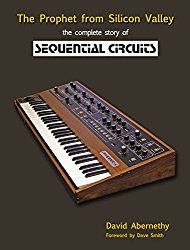
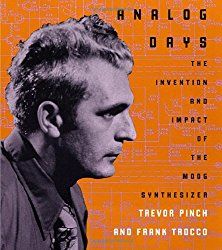
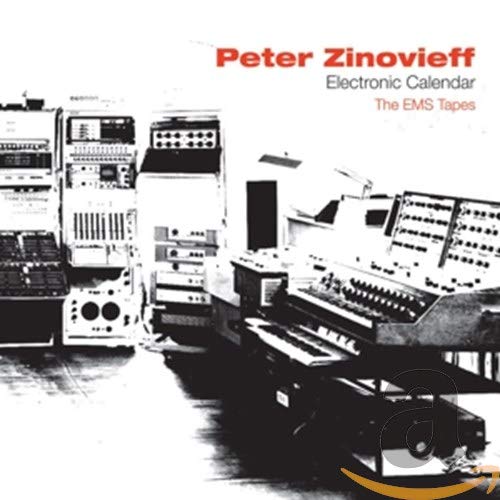
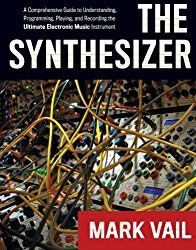

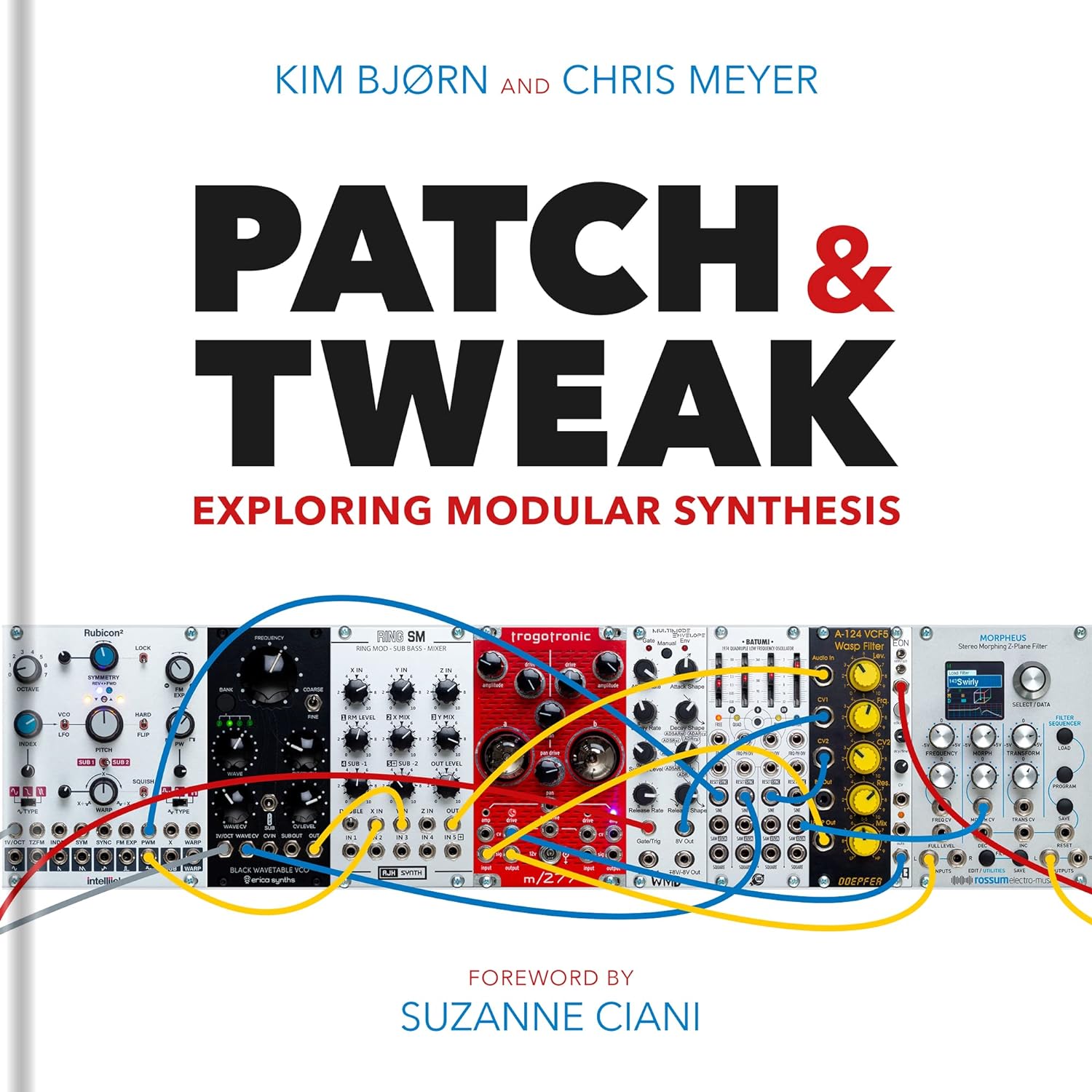
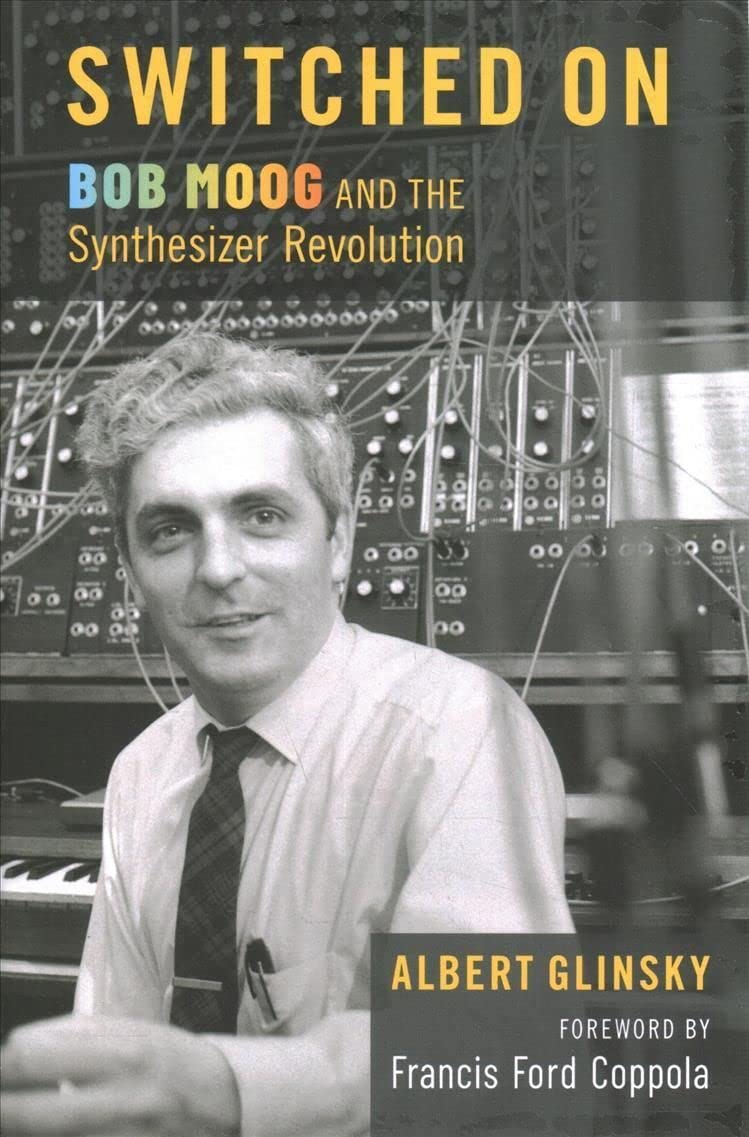
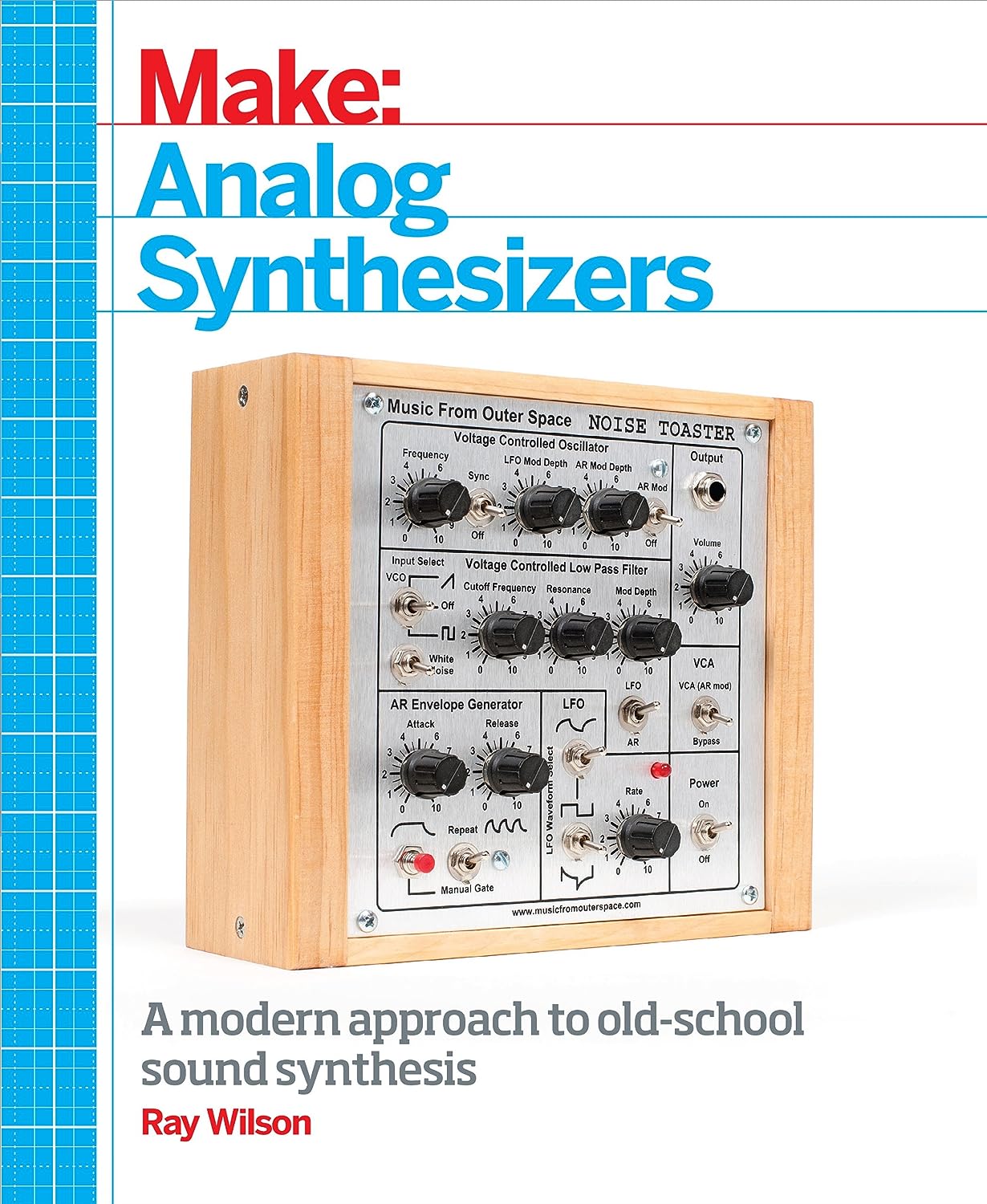
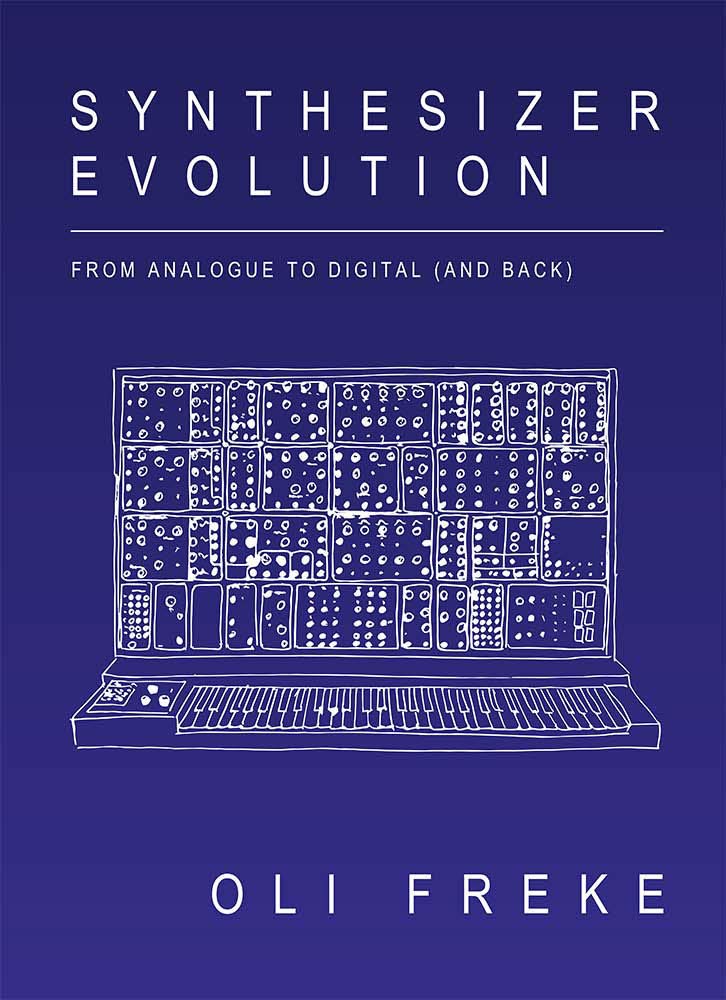

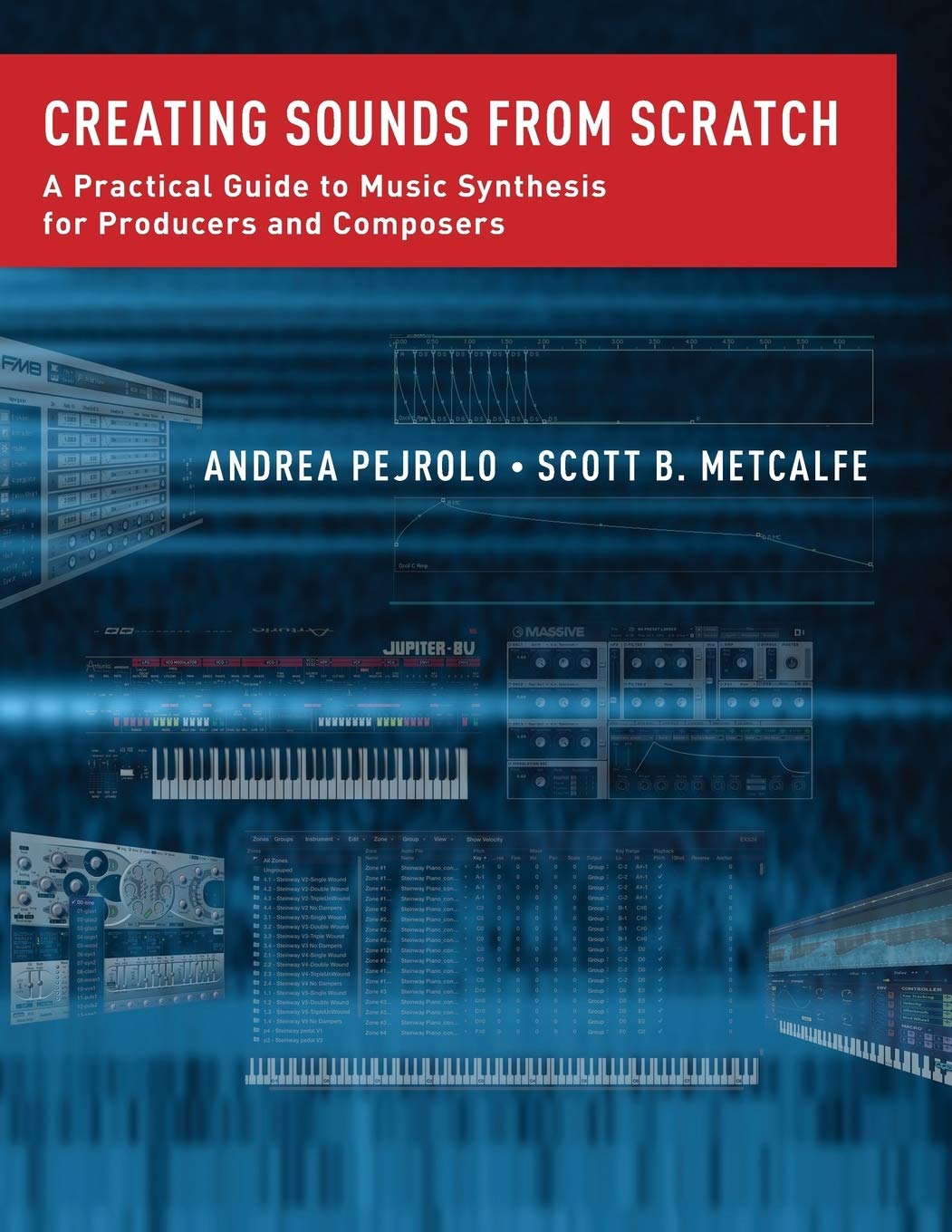


© Matrixsynth - All posts are presented here for informative, historical and educative purposes as applicable within fair use.
MATRIXSYNTH is supported by affiliate links that use cookies to track clickthroughs and sales. See the privacy policy for details.
MATRIXSYNTH - EVERYTHING SYNTH













© Matrixsynth - All posts are presented here for informative, historical and educative purposes as applicable within fair use.
MATRIXSYNTH is supported by affiliate links that use cookies to track clickthroughs and sales. See the privacy policy for details.
MATRIXSYNTH - EVERYTHING SYNTH























